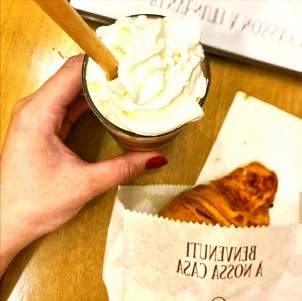In adult desserts, alcohol is often used to enhance the flavor. Rum, brandy, and cherry liqueur are all common alcoholic beverages used in baking. However, alcohol isn’t just for adding fragrance to desserts; it actually has five other uses that can enhance the flavor of baked goods.
The Functions and Usage of Four Ingredients: Alcohol, Spices, Vanilla, and Salt
Adding these four ingredients to everyday desserts can enhance aroma and flavor, bringing out a rich and complex taste. Each one is a magical seasoning that adds a touch of flavor to any dessert.
Before you begin making desserts, let’s take a look at the individual benefits and usage techniques.
How to Leverage the Effects of Alcohol
For example, even if it’s the same dessert, adding rum will create a sweet, rich aroma.
Adding cherry liqueur will create a fresh and refreshing flavor.
Adding brandy, on the other hand, creates a rich, fruity aroma. Depending on the type of alcohol added, desserts can take on completely different flavors.
Furthermore, each alcohol, when paired with its corresponding ingredients, adds depth to the flavor, leaving a lingering aroma.
Alcohol has five benefits that enhance the deliciousness of desserts.
- It reduces the sweetness of sugar, making it refreshing and smooth.
- It mellows the flavors of ingredients like eggs and cream.
- It reduces the flouriness of flour, creating a softer, smoother texture.
- It maximizes the flavor of various ingredients.
- It improves the shelf life of desserts, extending their shelf life.
How to use alcohol in baking?
Ultimately, however, alcohol is just an additional flavoring. The key is to add it in moderation, ensuring that the balance of flavors is not disrupted. When using alcohol with a strong sweetness, the amount of sugar in the raw ingredients must be adjusted to avoid over-sweetening the dessert.
Furthermore, the flavor and alcohol content of the finished product can vary depending on when the alcohol is added. If you don’t want an overly strong alcohol concentration, you can boil the alcohol to evaporate it, leaving only the flavor.
Adding the alcohol while the other ingredients are still hot preserves the flavor and a small amount of alcohol. Adding the alcohol after the other ingredients have cooled preserves both the alcohol and the aroma.
To maximize the effectiveness of the alcohol, it’s best to mix it into the batter at the right time to prevent the batter from separating due to the alcohol’s moisture. Sometimes, alcohol is applied to the cake after baking, so it’s best to choose a method that enhances the flavor of the dessert.
The Role of Spices and Herbs
Spices and herbs not only enhance the flavor of desserts, add fragrance, and create a rich, mature taste, but also have a preservative effect and mask the odor of ingredients like eggs.
Spices and herbs can add aroma, spiciness, and color to desserts, with the latter benefiting almost all spices and herbs.
How can you use spices or herbs in desserts?
Spice flavoring can be achieved by using them individually, enjoying their individual aromas, or by blending two or three spices together to enjoy the harmonious blend. Mixing spices creates a complex interweaving of aromas, bringing out a rich depth of flavor.
If you’re blending spices, combining spices with similar aromas is a surefire way to go. When making desserts, stock up on widely used spices like cinnamon, nutmeg, cardamom, allspice, and cloves.
While the amount used will vary depending on the dessert, it’s crucial to start with a small amount. Strong spices like rosemary and Sichuan peppercorns should be used with caution. First, test the recipe using the amount specified, then use your tongue to determine the flavor and adjust the amount slightly.
The most important thing about fresh herbs is their freshness. Washing and draining them thoroughly before use is crucial. For the same recipe, you’ll generally need three times as much fresh herbs as dried herbs. When using dried herbs that have been drained, only about one-third the volume of fresh herbs is sufficient.
Salt: Use sea salt sparingly.
Sprinkling salt on watermelon or adding it to red bean paste—a subtle application of salt can enhance the sweetness of desserts and add depth to the flavor. Because salt varies in particle size and saltiness depending on the type, be careful with the amount you use when first using it.
In addition, it’s recommended to use sea salt that’s rich in minerals, has an umami flavor, and a mild flavor. Refined salt is too salty and unsuitable for desserts.


Leave a Reply